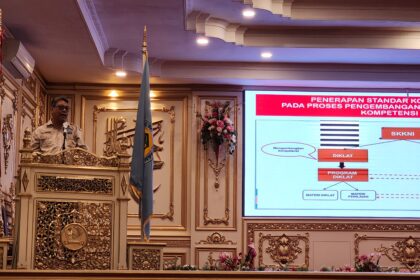[ad_1]
A World Health Organization (WHO) team in China announced on Tuesday that the coronavirus most likely jumped to humans through an infected animal host or even frozen wildlife products and that it was “extremely unlikely†that it leaked from a laboratory.
Peter Ben Embarek, a New York-based zoologist who assisted the WHO’s mission, made the ground-breaking claim during a joint WHO-China briefing in Wuhan, the Chinese city where Covid-19 was first detected at the end of 2019 before making its lethal spread worldwide.
Embarek said no further research or study was needed into the laboratory leak theory, which has been widely speculated and was even suggested by former US President Donald Trump.
That, in turn, has given new life to alternative theories about the pandemic’s origins, including the China advanced notion it may have started from cold chain contamination of imported animal products.
Professor Liang Wannian, deputy dean of the Tsinghua University’s School of Public Health who led a group of professionals selected by the National Health Commission (NHC) to work with the WHO’s expert team, suggested the theory at the same media briefing.
He said that numerous stalls inside Wuhan’s sprawling Huanan market had sold frozen animal products sourced from across China and overseas.Â
“China has seen waves of new flareups after Wuhan, likely ignited by chilled food or products delivered via cold chain logistics from abroad as we have found viable SARS-CoV-2 on the external packaging of some imported goods even at refrigerator temperatures,†said Liang in presenting a summary of the Chinese team’s key findings in Wuhan. Â
“Then we have to consider the probability of frozen and contaminated stuff transported over long distances from elsewhere to be sold at Huanan market that led to the initial cluster of cases there,†he said.
Embarek, an authority on zoonotic diseases who served as chief liaison officer for the WHO team while it conducted an epidemiological probe in Wuhan since January, said there were four main hypotheses about the pandemic’s origin.
“1) Covid jumped directly from a source animal to humans; 2) it entered human populations via an unknown intermediary reservoir of host animals close to humans; 3) food chain, in particular, cold chain logistics and food-related infections that acted as an ‘interface’ for Covid’s spread; and 4) a lab leakage or incident that unleashed the virus.â€
He said that the second scenario is the most likely and that frozen food from outside of China could have caused the first cases at Wuhan’s Huanan market. Embarek said the WHO team had nearly ruled out any laboratory accident as a plausible cause of the virus’ origin.Â
“Nowhere was SARS-CoV-2 researched or worked upon at any labs across the world before the pandemic and there were no publications about the virus… We have visited labs in Wuhan and talked to staff there and we believe a lab leakage was the least likely cause,†said Embarek.Â
Liang, the head of the Chinese team, said extensive studies of possible hosts for Covid’s animal-to-human spillover included bats, pangolins and minks. He said they also looked at animals with high susceptibility to Covid-19 such as cats.
“There was similarity of gene sequences between the known coronaviruses carried by these animals and SARS-CoV-2. Still, the similarity is not sufficient to point to a certain animal that must be the source,†Liang said. He said no Covid-19 signs had been discovered on bat samples found in Wuhan’s Hubei province. Â
Embarek said several bat and similar species in China had been studied without finding convincing traces of Covid-19 and these animals in neighboring countries should also be examined.Â
Liang said that the NHC’s retrospective study of roughly 70,000 samples from 233 hospitals in Wuhan and throughout Hubei province collected in months before the initial outbreak in Wuhan at the end of 2019 had found “no traces of Covid.â€
He also added there was no substantial fluctuation in the mortality rate of patients with pneumonia, influenza or other respiratory diseases, nor a sudden spike in these diseases in Wuhan and Hubei between July and early December 2019.
“Thus far we have not found proof of SARS-CoV-2 doing the rounds in Wuhan before December 2019 but it was still possible that there were hidden transmissions in other places in Wuhan proceeding the earliest discoveries of cases at Huanan market starting from the second half of December [2019].â€
Embarek said that an urban center like Wuhan may not have been the place where Covid-19 initially jumped from bats to humans and that other animal species that were brought into the city and sold at Huanan market could have been the origin.Â
“We have mapped all initial cases and their locations at Huanan market and conducted genetic sequencing. Though we still don’t have a clear picture, we are now adding details,†said Embarek.Â
Marion Koopmans, a Dutch virologist who was part of the WHO’s Wuhan mission, said that the team had collaborated with their Chinese peers to identify the Huanan market’s suppliers and to pinpoint from where they sourced their animal products.
“We must continue to trace products sold at the market in December 2019 to their sources, to the farms in other parts of China or even overseas, and interview vendors and see if samples back then are still available for more analysis,†said Koopmans.Â
At the same time, she cautioned that there was still very little scientific understanding of frozen product contamination, including under what conditions, temperature and humidity would make Covid-19 transmission a possibility. Â Â
[ad_2]
Source link











